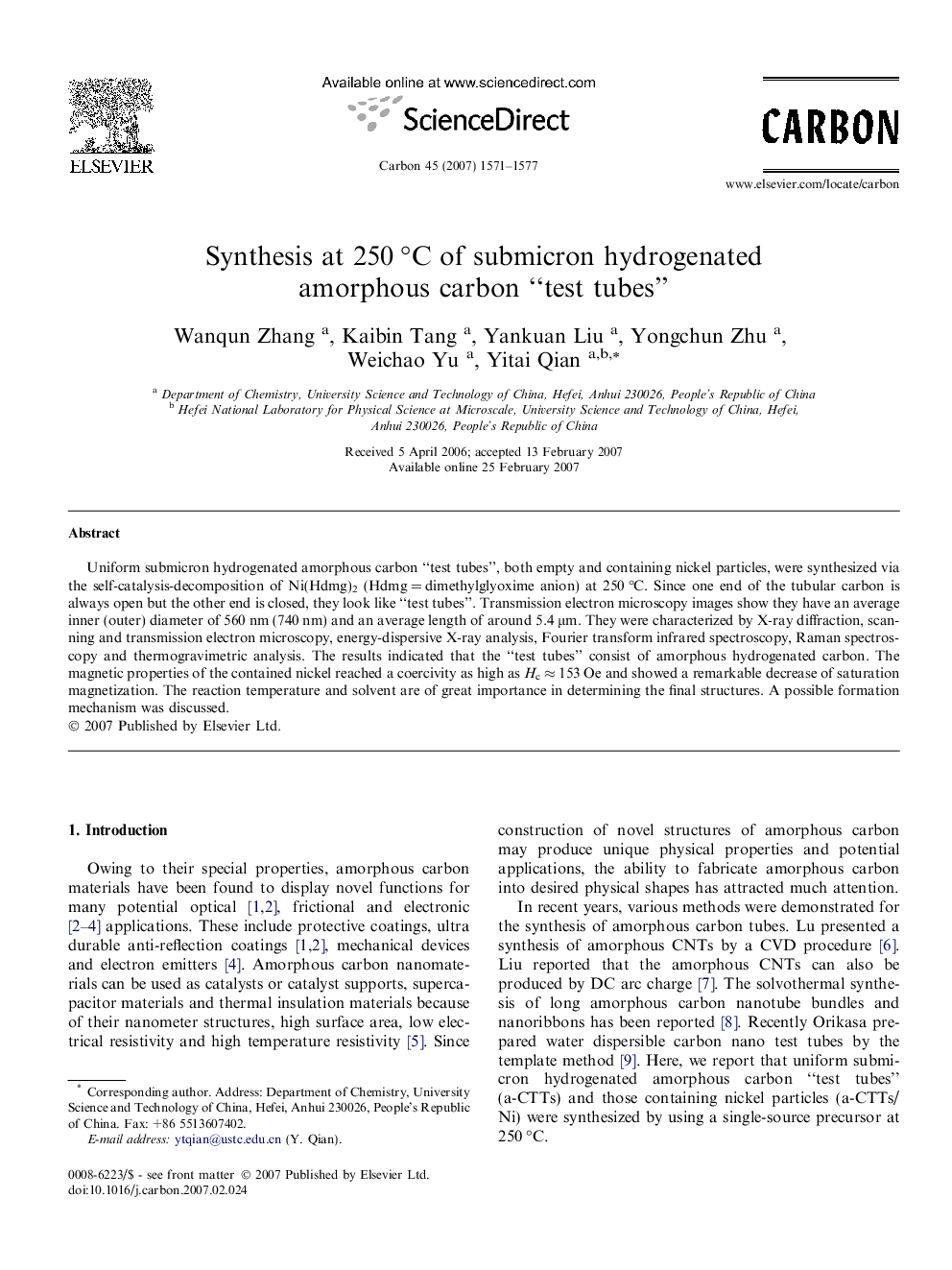| Article ID | Journal | Published Year | Pages | File Type |
|---|---|---|---|---|
| 1418897 | Carbon | 2007 | 7 Pages |
Abstract
Uniform submicron hydrogenated amorphous carbon “test tubes”, both empty and containing nickel particles, were synthesized via the self-catalysis-decomposition of Ni(Hdmg)2 (Hdmg = dimethylglyoxime anion) at 250 °C. Since one end of the tubular carbon is always open but the other end is closed, they look like “test tubes”. Transmission electron microscopy images show they have an average inner (outer) diameter of 560 nm (740 nm) and an average length of around 5.4 μm. They were characterized by X-ray diffraction, scanning and transmission electron microscopy, energy-dispersive X-ray analysis, Fourier transform infrared spectroscopy, Raman spectroscopy and thermogravimetric analysis. The results indicated that the “test tubes” consist of amorphous hydrogenated carbon. The magnetic properties of the contained nickel reached a coercivity as high as Hc â 153 Oe and showed a remarkable decrease of saturation magnetization. The reaction temperature and solvent are of great importance in determining the final structures. A possible formation mechanism was discussed.
Related Topics
Physical Sciences and Engineering
Energy
Energy (General)
Authors
Wanqun Zhang, Kaibin Tang, Yankuan Liu, Yongchun Zhu, Weichao Yu, Yitai Qian,
